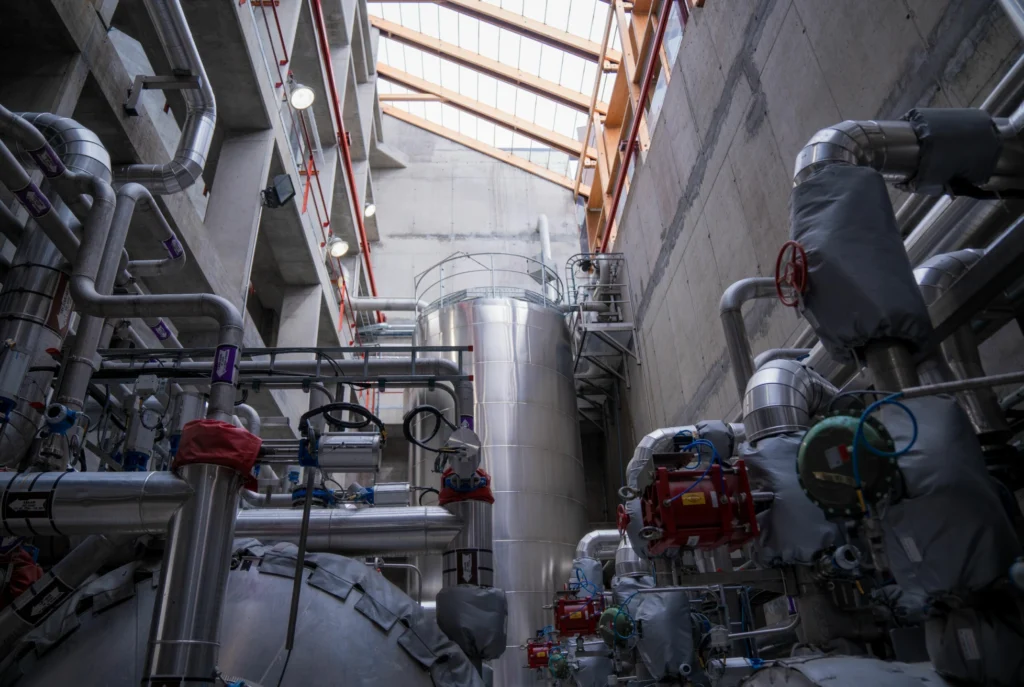AI in Wastewater Treatment
The FAITH Project's Large Scale PilotNEWSLETTER >
In an ambitious stride towards sustainable innovation, the FAITH project advances a large scale pilot on the application of artificial intelligence (AI) in wastewater treatment. The pilot is hosted at Veas, Norway’s largest wastewater treatment plant serving the greater Oslo area. Veas processes wastewater from an urban area with 800,000 residents, playing a vital role in maintaining the marine environment of the Oslo fjord. The pilot is coordinated by the research organization SINTEF that provides expertise in AI for industrial applications.
AI-powered innovations in Wastewater Treatment
The pilot focuses on optimizing the denitrification process, a crucial step in wastewater treatment where nitrate is converted to nitrogen gas through a biological process. Denitrification is important to preserve the ecological balance of the marine environment. By developing AI prediction models, the pilot aims to improve nitrogen removal and reduce usage of chemicals needed for denitrification, leading to substantial cost savings and environmental benefits.

Figure 2. VEAS operates the treatment plant at Slemmestad. It is Norway’s largest, handling 100 million cubic meters of sewage per year. Photo by: Martin Leigland / TV2
The challenge of accurate and robust AI models
To leverage AI prediction models for denitrification of wastewater is a challenging task. Nitrate removal is a biological process whose state cannot be measured directly, and involves substantial seasonal and weather-driven variation. To address this, the SINTEF team explores different approaches to modelling, including initial forecasting models and chunk-based forecasting models where time series data are chunked in smaller time periods, and an ensemble of models trained on the individual chunks are used for model prediction. The best performing models will then be validated and deployed in the Veas process.
FAITH AI Trustworthiness Assessment Framework
At the heart of the FAITH project, is the AI Trustworthiness Assessment Framework (FAITH AI TAF), developed to validate and strengthen AI systems that require high levels of trustworthiness, such as those to be used in critical infrastructure as wastewater treatment. This framework will be applied to ensure the trustworthiness of the AI prediction models for Veas’ wastewater treatment processes. The goal is to enhance the efficiency and effectiveness of the processes while ensuring that AI models are trustworthy and explainable.
Ensuring Trustworthiness and Stakeholder Involvement
Trustworthiness is a cornerstone of LSP5. The project emphasizes accuracy, robustness, interpretability, and human oversight of AI models. Regular stakeholder meetings, workshops, and direct interaction with AI predictions ensure that the models meet the needs and expectations of Veas personnel. The FAITH AI TAF will guide these assessments, ensuring the AI systems are reliable and transparent.
Looking Ahead
The FAITH large scale pilot of wastewater treatment has just completed its planning phase, and are now well into initial piloting. Here, the first AI models from the project are be made available to stakeholders at Veas, including process owners and engineers. In the third and final phase of the pilot, a replication pilot, stakeholder engagement will further expand and advanced AI models will be applied for process control provided successful initial trials and validation. The ultimate goal is to achieve significant improvements in nitrogen removal and cost efficiency setting a benchmark for wastewater treatment facilities worldwide.
By leveraging AI, the FAITH project and its partners, SINTEF and Veas, are paving the way for a cleaner, more sustainable future. This large scale pilot not only addresses critical environmental challenges but also showcases the potential of trustworthy AI in industrial applications.

Figure 3. VEAS
Author(s)

Asbjørn Følstad
